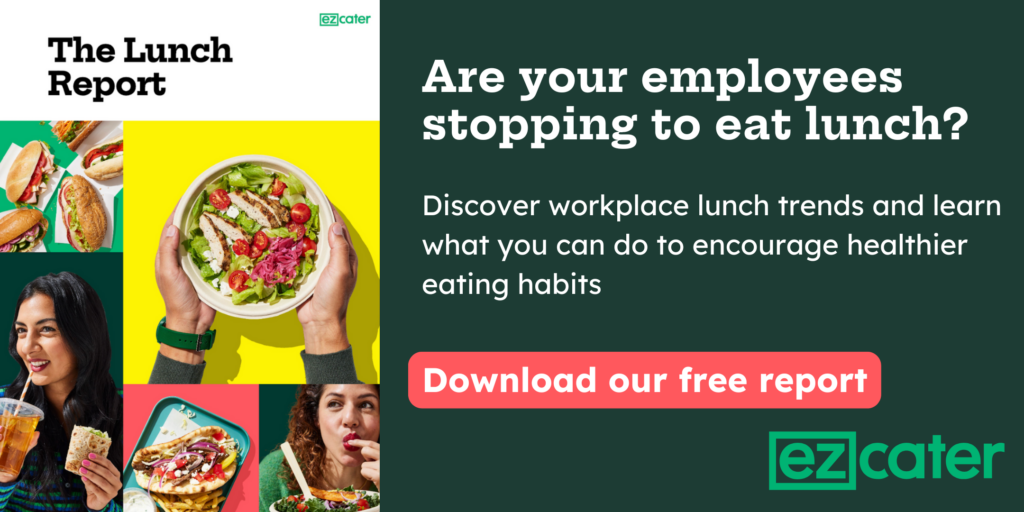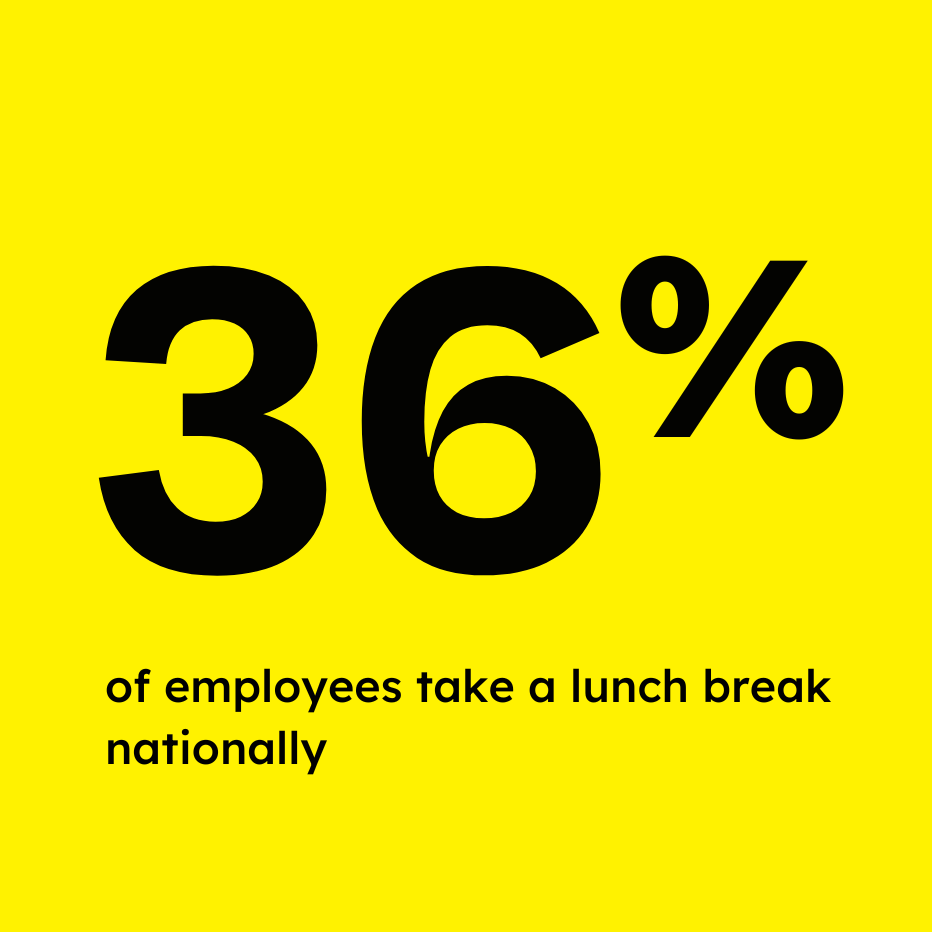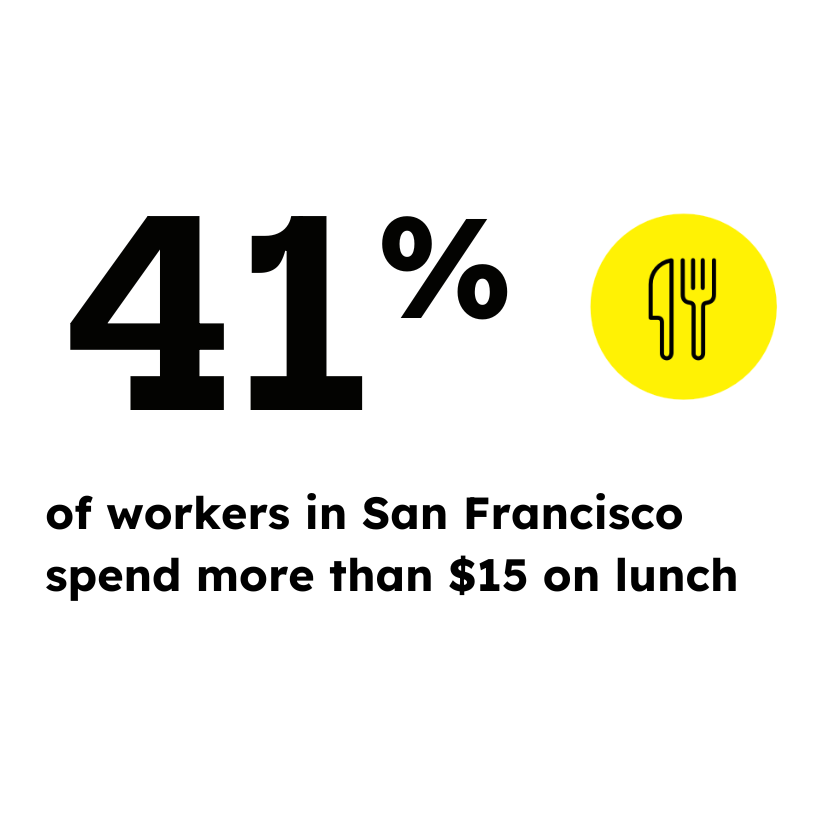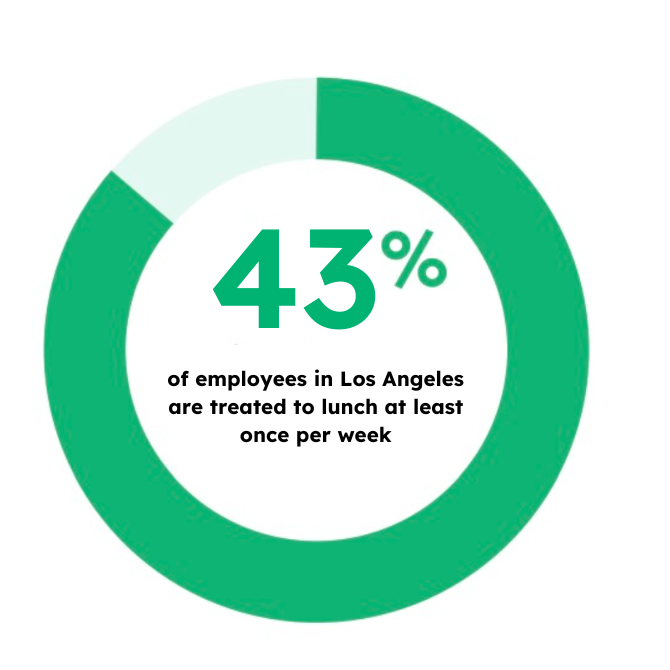Lunch breaks unwrapped: how American workers enjoy their midday meals
- Grace Trumpfeller
- •
- 3 Min Read
- •
Have you ever wondered what delicious surprises are tucked away in those brown bags, lunch boxes, and takeout containers that employees across America use for their midday meal? You’re in luck.
ezCater recently surveyed 1,000 full-time employees and 4,000 workers across 10 major U.S. cities to take a bite-sized journey through lunch breaks in America. What we discovered might surprise you.
Our newly published 2024 Lunch Report reveals that lunchtime in America is nearly as diverse as the country itself, from leisurely breaks on the East Coast to vibrant dining scenes on the West.
Let’s explore what is (and isn’t) on the menu nationwide.

Just about everyone looks forward to their lunch break
If there’s one thing American workers have in common, it’s their love of lunch. According to ezCater’s 2024 Lunch Report, 75% of employees look forward to lunchtime during the workday. That figure is even higher on the East Coast, where New Yorkers anticipate their midday meal the most.
It’s no surprise why employees across the country crave a lunch break, with 51% reporting that they feel happier after their midday meal and 49% eating to combat burnout. Even better, 98% of employees agree that food improves work performance.
But not all workers share lunch break habits
While it’s no shock that employees are united by their love of lunch, their lunch break habits are anything but uniform. In fact, it’s a toss-up if workers even stop to take a lunch break in the first place.
Our 2024 Lunch Report found that just over one-third of employees (36%) take a lunch break nationally. The Big Peach takes the juiciest bite out of lunch, with 43% of Atlanta workers taking a lunch break daily. However, not every city shares that lunchtime enthusiasm, as many workers skip their break altogether.

Chicagoans are the most likely to miss lunch: one in five Chicago employees skips lunch at least three times per week. As for why they go without, 32% of Chicago workers say they simply don’t have enough time in the day to stop and grab something to eat and still get all their work done.
Yet, even when employees do stop working to munch on a midday meal, how long they stop to eat also varies by city. Unsurprisingly, the New Yorkers who look forward to lunch the most also take the longest lunch breaks, clocking in at 40 minutes on average.
Menu analysis: what’s trending now
While Americans everywhere break for lunch, how they do it varies dramatically by city. If you’ve ever wondered how employees across the U.S. fuel up during lunch breaks, take a look at 2024’s latest lunchtime trends, as told by workers across ten major cities.
Phoenix plates up home-cooked meals
Home-cooked meals will always have a place at the table, especially in Phoenix, where 27% of employees say they always make and bring lunch from home. The Valley of the Sun might as well be dubbed the Brown Bag Capital, with 13% of workers never buying lunch — a higher percentage than any other metro area.
While some employees may just prefer their own cooking, 34% of Phoenix workers say they buy lunch out less frequently due to higher food costs. And when they do buy lunch, 33% keep the cost under $10.
San Francisco orders lunch to-go
The Valley of the Sun embraces brown bag lunches, but San Francisco has an appetite for something else entirely. To-go restaurant meals reign supreme in San Francisco, where workers are the most likely to go out for lunch multiple times per week, and they’re the least likely to skip lunch.
Employees in San Francisco also tend to have a higher budget: 41% spend more than $15 on lunch. With so many delicious San Francisco restaurants, it’s easy to indulge in flavorful chicken tikka masala and fresh naan one day, and enjoy a refreshing salad and artisanal macarons the next.

Houston loves leftovers
Beyond those who pack lunch or order takeout at their desks, many employees indulge in the joys of catered meals right in the workplace — especially in Houston. A whopping 84% of H-Town employees say they take workplace catering leftovers home, more than any other metro.
For Houston workers, the perks of catered lunches are threefold: catering saves them time, money, and stress. Those are major benefits, seeing as 17% of employees find the meal-prepping process stressful.
Boston craves a little treat
Like workers in Houston, employees in Boston enjoy free food in the workplace. Their preferred employer-provided lunchtime staple? Little treats, of course.
The concept of “little treat culture,” has evolved from a TikTok trend to a bona fide movement in workplaces across America, as more employees dig into small sweets and savory snacks as a form of self-care or reward before, during, and after lunch.
Little treat culture is especially prominent in Boston, where employees enjoy free snacks in the workplace more than any other metro. When treats aren’t company-supplied, you can find Bostonians buying their own — but they tend to keep their food spend below $5.
To pay or not to pay, that is the question
Our 2024 Lunch Report found that employees foot the bill for their own meals in most major U.S. cities. Interestingly, we discovered that D.C. stands out as the city where workers pay for lunch the most often.
Only 31% of employees in the nation’s capital have their lunch paid for by their employer, which is 16% less than the national average. However, this doesn’t reflect the lunch benefits available across the country.
Among all surveyed metros, Los Angeles boasts the highest share of employer-paid meals, with 43% treated to lunch at least once per week. This is a major perk, considering 18% of Angelenos say that preparing work lunches takes a toll on their free time, the highest rate of any city.

Free lunches serve up smiles nationwide
Employees across the country may have varied midday routines, but they all share one important thing in common: the benefits of eating lunch, especially when it’s provided by their employer.
Free food during the workday helps reduce stress, offers a much-needed break, and saves employees both time and money. Even better, food is a low-cost work perk that employers can capitalize on (and reap the rewards of) with the help of a platform like ezCater.
Curious to learn more about lunch trends across the country? Download ezCater’s 2024 Lunch Report for insights that could transform your workplace lunch experiences.








